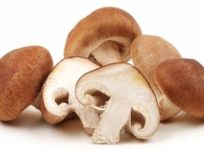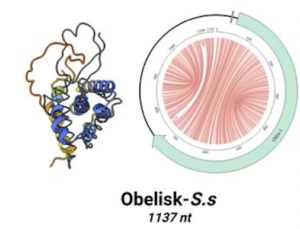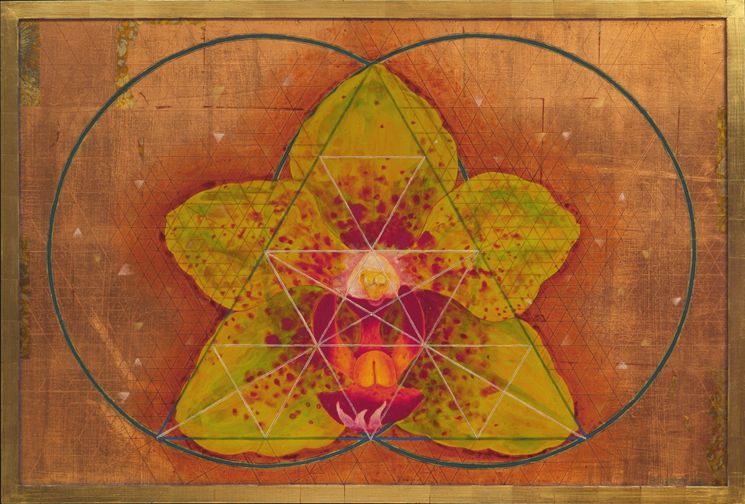 Ayurveda, India’s 4,000 year-old “science of life” is quietly but steadily moving out of the margins and toward the forefront of modern health care. Advocates say it has the potential to remedy much that has gone wrong in American medicine.
Ayurveda, India’s 4,000 year-old “science of life” is quietly but steadily moving out of the margins and toward the forefront of modern health care. Advocates say it has the potential to remedy much that has gone wrong in American medicine.
A coherent, comprehensive system emphasizing nutrition, botanical medicine, physical activity, meditation, and synchrony with subtle but powerful daily, monthly and yearly biological cycles, Ayurveda offers a strong framework for multi-modal preventive medicine. It is also a patient-friendly, non-pharma complement for managing chronic diseases refractory to allopathic therapies.
Though practiced in Indian communities and on the periphery of US medicine since the 1960s, Ayurveda is suddenly poised for prime time, as a growing number of American physicians embrace its tenets and practices. In recent years, it has emerged in clinics, spas, academic centers, and even oncology wards nationwide (see Once Considered “Fringe,” Yoga Enters Mainstream Cancer Care).
According to the National Ayurvedic Medical Association (www.ayurveda-nama.org), there are now over 30 Ayurvedic training programs in the US (see Ayurvedic Credentialling). The number of practitioners and lay Ayurvedic consultants is in the low thousands. NAMA just marked its 11th year, and cites over 450 members, with further growth expected in the coming years.
Hilary Garivaltis, NAMA’s president, is also Dean of the School of Ayurveda, at the Kripalu Center for Yoga & Health in Lenox, MA http://www.kripalu.org/study_with_us/351). She said her school’s year-long program is experiencing robust growth, driven partly by increased physician participation. Kripalu is also developing a collaborative research agenda with investigators from major medical schools looking at yoga and lifestyle interventions for obesity and related problems.
On the West Coast, the Scripps Center for Integrative Medicine, La Jolla, CA, launched a 4-part physician training course produced with Maharishi Ayur-Veda Association of America (MAAA), an organization that initially helped transplant meditation, and later yoga and Ayurveda, from India to America in the late 1950s.
The Scripps course, which covers Ayurvedic pulse diagnosis, identification of constitution (Prakriti) and imbalances (Vikriti); intensive study of diet, nutrition and lifestyle, and basic Ayurvedic herbal medicine, gives physicians a working knowledge of Ayurveda as well as a core skill set to take back to their clinics (http://www.clinical-ayurveda.org/live).
“It won’t make you into Vasant Lad,” said Erminia “Mimi” Guarneri, MD, founder & medical director of Scripps Center for Integrative Medicine, in joking reference to one of the most renowned Ayurvedic practitioners in the US. “But it will give you new preventive approaches that will resonate with many patients, and a good foundation for further study.” Last year, the first run of the course drew more than 50 clinicians, with more expected this year when the program kicks off in March.
Welcome to the Ayurvedic Revolution!
To better understand the difference between the allopathic and Ayurvedic mindsets, consider the analogy of a tree bearing bad fruit. “In a Western mindset, your job is to cut away the bad fruit, or drug it to improve its appearance,” said Dr. Guarneri, who is a cardiologist. “With Ayurveda, you look at the soil, the macro & micronutrient content, the weather, environmental conditions. You want to find out why this particular tree is producing bad fruit.”
In many ways, Ayurveda is a logical next step for Americans who’ve benefited from yoga. “As yoga continues to make a huge impact in the West, so will its root science, Ayurveda,” says Bhaswati Bhattacharya, MD, MPH, a NYC-based physician and pioneer in Ayurvedic education in the US and India. Through her Dinacharya Institute (www.dinacharya.org), Dr. Bhattacharya organizes programs enabling American clinicians to learn from some of India’s most respected Ayurvedic physicians—and vice versa.
While Ayurveda has deep roots in Indian culture, it should not be viewed as “folk medicine.”
“Ayurveda is a complete system of living. It is an attitude or philosophy, but with tools and techniques that can bring people back to a connection with their environment, to the recognition that we live in a system of inter-dependent life cycles. Of course, the modern urban world is doing its best to ignore this by creating as many nature-defying inventions it can. But can we really conquer nature? Do we want to? Ayurveda certainly does not,” Dr. Bhattacharya told Holistic Primary Care.
The system offers many remedies to address pathophysiology without pharmaceuticals. “It emphasizes relationship: of patient with physician, with family, with his/her own body, with the natural environment, pets, foods, water, lifestyle, and relationship of man with Spirit,” said Dr. Bhattacharya. “If the National Prevention Council is smart, it will incorporate Ayurvedic principles into its recommendations: movement, clean food, mental cleansing, emotion management, connection with inner self.”
Core Concepts & Defining Principles
“Ayurveda has central principles that conventional Western medicine simply does not have,” says Stuart Rothenberg, MD, a conventionally trained family physician who has practiced Ayurveda since the mid-1980s. Dr. Rothenberg is a lead instructor for the Scripps course.
“The most important principle is that there is an underlying, unified, inner field of intelligence which governs the functioning of the body. The goal of all therapeutics is to enliven that intelligence, to wake it up, which leads to self-repair, self-healing.” This recognition of a coherent, vital energy is found in all traditional Asian healing systems, and also in Western naturopathy and homeopathy. Allopathy is the only system that categorically excludes it.
“It goes by different names in different systems. In Vedic literature it is called Atma,” said Dr. Rothenberg, explaining that Atma could be considered the underlying inner “template” of a given individual in ideal health and balance. “It permeates every cell, every tissue. The goal of Ayurveda is to enliven, balance and normalize Atma as it manifests itself.
Prana is Atma in action, as it expresses itself in daily life. “Prana is the core intelligence in motion. Ayurvedic anatomy describes energy “channels” throughout the body through which Atma circulates. Large channels are termed srotas, smaller ones are called nadis. Health is predicated on keeping these channels clear and open, facilitating free circulation of the energy.”
The Three Doshas
When Americans encounter Ayurveda, one of the first concepts they hear of is the “Three Doshas.” The idea is that as Atma, the unmanifested life force, enters into the physiological processes of the organs, it takes on three aspects:
• Vata: “Air/Wind” processes of nervous system activity & inner movement like circulation, breathing.
• Pitta: “Fire,” the digestive & assimilative processes, metabolism, inflammatory processes, tissue breakdown.
• Kapha: “Earth/Water,” the structuring, tissue-building, and energy-storing processes.
All physiology results from interactions between these three basic aspects. In most people, there is a tendency for one aspect to predominate, hence the idea that some are “Vata types,” while others are “Kapha,” or “Pitta” types. If the dominant function goes too far out of balance with the others, disease states emerge. Doshic balance is greatly influenced by diet, lifestyle, and environment.
Agni & Ama
Nutrition and digestion are at the heart of Ayurvedic practice. “So many problems stem from poor digestion and elimination,” said Kripalu’s Ms. Garivaltis. “This is very often the place we start when working with patients. We explore their eating schedule, types of food, amount of food, what kind of exercise they engage in, to help keep the system regular.”
Dr. Rothenberg agreed. “Roughly 80% of all chronic disease has its roots in poor diet and dysfunctional digestion. Imbalances in stomach pH (excess or lack of stomach acid), enzyme dysfunction, bacterial overgrowth…all lead to improper digestion and chronic inflammatory reactions that eventually become systemic.”
Ayurveda describes the same pattern in different language: disordered Pitta (digestive fire) leads to accumulation of improperly digested toxic food byproducts called Ama. Absorption and accumulation of Ama provokes system-wide Pitta (fire) activity as the body tries to burn off the Ama, he explained.
One goal of Ayurvedic counseling is to help people reconnect their own physiology with larger natural cycles. “According to Ayurveda, the digestive “fire” is strongest at mid-day, because digestive fire follows the sun (Agni, or primordial fire),” Dr. Rothenberg said. “In practice, we find that having lunch as the main meal, with a much lighter evening meal, ameliorates many digestive problems and reduces chronic systemic imbalances. If you eat more at mid-day you’ll get more from meal with less Ama production.”
Ms. Garivaltis said many Ayurvedic suggestions are quite simple and practical. “For someone who has a hard time with regular bowel movements, I would recommend waking early enough to do a little stretching and movement, then drinking a cup of hot water and relaxing on the toilet before rushing into the day. It sounds simplistic, but a regular practice like this establishes a good pattern, and promotes the necessary morning evacuation.”
Other aspects are more complex. The system includes intensive detoxification protocols, known as Panchakarma. “Protracted doshic imbalances lead to accumulation of endogenous metabolic toxins. This, combined with absorption of environmental toxins, is a key driver of disease,” said Dr. Rothenberg. “The Vedic sciences outline very sophisticated, individualizable detox programs.”
Though they vary in details, they are generally comprised of three phases. The “Preliminary Action” involves intensive massage with sesame oil infused with herbs specific to the patient’s doshic type. This is done by trained practitioners, and its main purpose is to push toxins out of muscle and fat tissue in which they are stored, and into circulation.
The “Secondary Action” involves some form of heat treatment to direct toxins into channels of elimination. Hot herbal baths, poultices, steam and compresses dilate these channels. The “Definitive Action” involves use of purgatives and laxatives such as Castor oil and Senna, to facilitate final elimination of toxins.
“The purge must be done in a very controlled way, and it is very important that during the process, the diet be very light. The diet has to support the cleansing. You don’t want people eating heavy, oily food when they’re trying to cleanse.”
Panchakarma is best done in specialized spas where patients can escape daily habits, and trained professionals can guide the protocol. But the Scripps planners recognize this is impractical for many; the course teaches simplified techniques doctors can pass on to patients for home use.
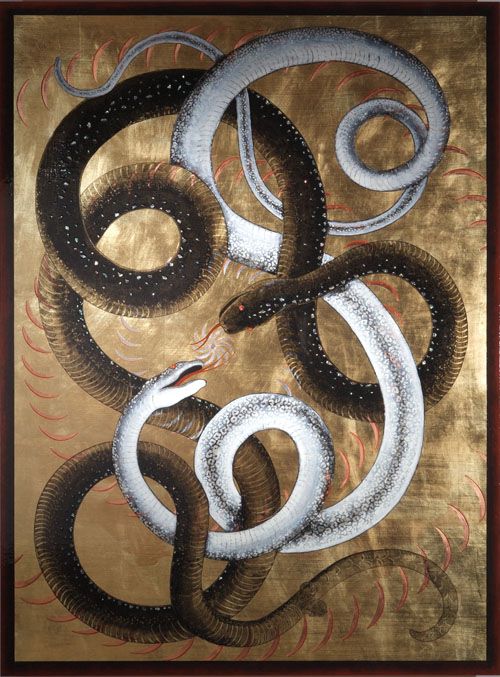
A Broader Vision of Health
In many ways, Ayurveda is akin to traditional Chinese medicine, with its conception of Qi (essential life force), meridians, emphasis on balance, and focus on nutrition. Some scholars believe much of the knowledge behind TCM originated in India and traveled over the Himalayas along with Buddhism.
“Western medicine dismissed the idea of a coherent vital force as “unscientific.” Now, with 50% of Americans suffering from chronic diseases, our life expectancy lagging most other industrialized nations, perhaps we’re becoming more humble,” said Dr. Rothenberg, who first became interested in Ayurveda during his medical training at New York University in the ’70s.
“I had a strong inner sense that there was more to health than what I was learning. It seemed to me the most important thing a health professional could do is to help people create health. And that’s not what they were teaching us to do. The idea that health was simply absence of disease seemed very limited.”
The gateway to a broader vision opened when the young med student heard a lecture on the effects of Transcendental Meditation, a form of meditation introduced in the US in the late 1950s by Maharishi Mahesh Yogi (Mahesh Prasad Varma, Jan. 12, 1914—Feb. 5, 2008). By the 70s, there was considerable research—some of it published in major medical journals–showing TM could reduce blood pressure and lower cardiovascular risk.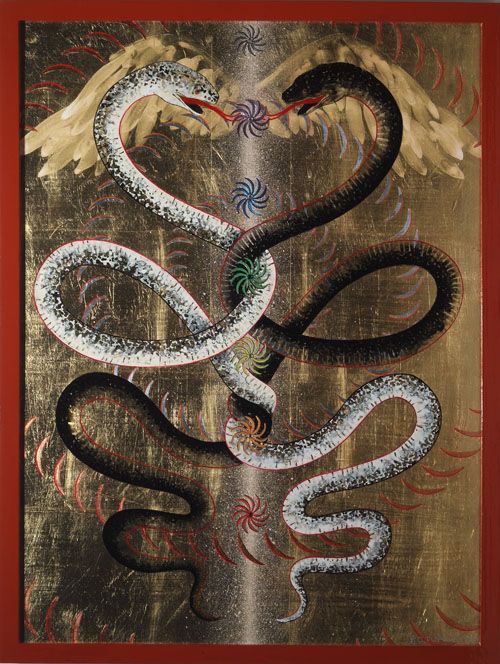
“I started practicing TM, and had very direct personal benefits—reduced stress, increased clarity, less need for sleep. Years later, I became aware that it was part of a much broader system of health care called Ayurveda.”
Typology & Temperament
Ayurveda posits that people are born with innate constitutional traits, known as Prakriti in Sanskrit. “This is not just physical, it is also mental and emotional. Recognizing a person’s essential nature is a central aspect of diagnosis,” said Dr. Rothenberg. “Classical theory posits 10 essential types: three “monodoshic” types, with strong predominance of one of the three doshas; six “bi-doshic” types, in whom two doshas manifest strongly while the 3rd is subdued; and a tri-doshic type in whom the three doshas manifest with roughly equal strength.
Predominance of a particular dosha (or doshas) in a given person will predispose him/her to patterns of imbalance that over time can lead to disease. Recognizing specific imbalances, known as Vikriti, is the other key to Ayurvedic diagnosis.
In a sense, the whole art and science comes down to “recognizing to what extent a person has deviated from his or her own essential nature. For example, a Pitta type will always be happiest when Pitta aspects are somewhat dominant. But if they become too dominant, they create disorders,” Dr. Rothenberg said.
Ms. Garivaltis noted that Ayurvedic diagnosis is quite distinct from allopathic diagnosis, in that it is focused more on antecedent processes rather than clinical symptoms or “chief complaints.” It is complementary to, not competitive with Western disease classification.
“We’re trained to recognize imbalances in the body/mind before they turn into full-on pathology, sometimes before a Western diagnostic test can detect changes. For example, we will see signs of “fire” (excess Pitta) building in the body in subtle ways and we can predict how it could manifest later as ulcers, skin problems, or joint inflammation depending on a person’s constitution or heredity.”
Of Doshas & DNA
Is a person’s Prakriti genetically determined? Western medicine accepts the idea that people are born with hereditary predispositions for certain diseases, but the science shows that genotypes are highly modifiable by environmental factors (ie, diet and lifestyle). Doshic imbalances are similar; a person’s Prakriti sets the stage, but diet and lifestyle will determine the outcome of the play.
Dr. Rothenberg said he is not sure if doshic types can be firmly linked to genetics, but the question has aroused research interest. Several projects are underway in which geneticists are working with Ayurvedic specialists to look for determinants of doshic characteristics in DNA. Another potential line of research is on familial doshic clusters. “In practice, we definitely see families where Kapha tendencies (ie, metabolic dysregulation, weight gain) are predominant, while in other families there are a lot of nervous system and “psychosomatic” issues, that is, “Vata” patterns,” he said.
The matter of doshas and DNA begs deeper questions: to what extent can—or should–Ayurveda be explained in Western reductionistic terms? Can the clinical techniques of Ayurveda be extracted from their cultural and philosophical context and adapted to 21st century American culture without losing something essential?
Dr. Rothenberg said it can be challenging to balance the essentials of an ancient tradition with the daily realities of a very different world, but it is possible.
“In the traditional Vedic view, each of us has had a succession of lifetimes. But we need not subscribe to this idea to practice good Ayurvedic medicine. After all, we’re treating a person in this life. All we need accept is that someone is manifesting a particular type, and a particular imbalance here and now.”
Scripps’ Dr. Guarneri believes one can take techniques from Ayurveda and incorporate them into a Western clinic, “just like one can do cardiovascular surgery in a hospital in Delhi. I don’t think you need to believe in Ganesha to practice or obtain benefit from Ayurveda, just like you needn’t be a Buddhist to benefit from acupuncture or TCM. You don’t have to be from a particular culture to learn and benefit from what that culture knows.”
At the same time, she stressed that things taken out of context may not work as well. “The herb Boswellia might give anti-inflammatory effects alone, but you’ll get a better outcome if you use it in conjunction with cleansing, diet changes, and meditation. These things work together,” she added.
Dr. Rothenberg acknowledged that the Sanskrit terminology and Hindu cultural framework may be stumbling blocks for some Americans, but they need not be.
“”This is universal knowledge, not “Hindu” knowledge, or “Indian” knowledge. Though it comes from India, it is universal in applicability.”
“Our approach is that Vedic knowledge and Western knowledge are both valid explorations of a common universe. Each is valid and coherent in its own respects. Each can shed light on the nature of things, and on the other. The aspects in which they correlate give us great confidence.”
The Future of Ayurveda in America
Dr. Bhattacharya believes Ayurveda has great potential to restore the relationality and creativity that has been squeezed out of most American doctors’ lives.
“Ayurveda emphasizes the importance of perception in diagnosis and treatment. Most modern-day physicians are not able to be as perceptive or focused as our predecessors in times past: the focus now is on paperwork, what is allowed, reimbursed, or demanded in the “health care” system. Ayurveda says, just look at the patient. The imbalance will reveal itself. It is detective work. A good Ayurvedic diagnostic report is like a piece of investigative journalism.”
It might even help practitioners and patients move away from the “blame game” that characterizes clinical life these days. “If every move we make has a potential punitive consequence, the path to healing is more complicated. American medicine has created a culture of fearful doctors: does anyone really want a fear-filled person working on them when they are ill and vulnerable?”
Dr. Rothenberg sees the Scripps course as a first step toward integrating Ayurveda into mainstream medicine. “There is a goal to get Ayurvedic training into conventional med schools. We’re developing a one-year curriculum for med students that can be taken during a “sabbatical” year.”
Though they are respectful of ancient traditions, the course instructors are sensitive modern realities. “We teach quick diagnostic techniques and focus on a “top three recommendations” approach that you can use in a busy conventional practice. You really can do a lot of Ayurvedic medicine in a 15-minute office visit. But we also encourage setting aside one half-day per work week for longer, more intensive consultations.”
About the Artist: The paintings accompanying this article, “Triunity: Three as One,” “Ida & Pingala” and “Caduseus,” were created by award-winning New York artist, P.C.Turczyn. Ms. Turczyn’s work has been featured in solo and group exhibitions in museums, galleries and cultural centers, across the United States, Canada and Japan. Her current work explores how visual art can support the healing process for patients, loved ones, and healthcare staff. She is conducting surveys to determine the efficacy of her images when used in conjunction with guided meditation. To view the Infinite Qualities print series of floral mandalas, and a complete gallery of P.C.Turczyn’s work, visit: www.pcturczyn.com



